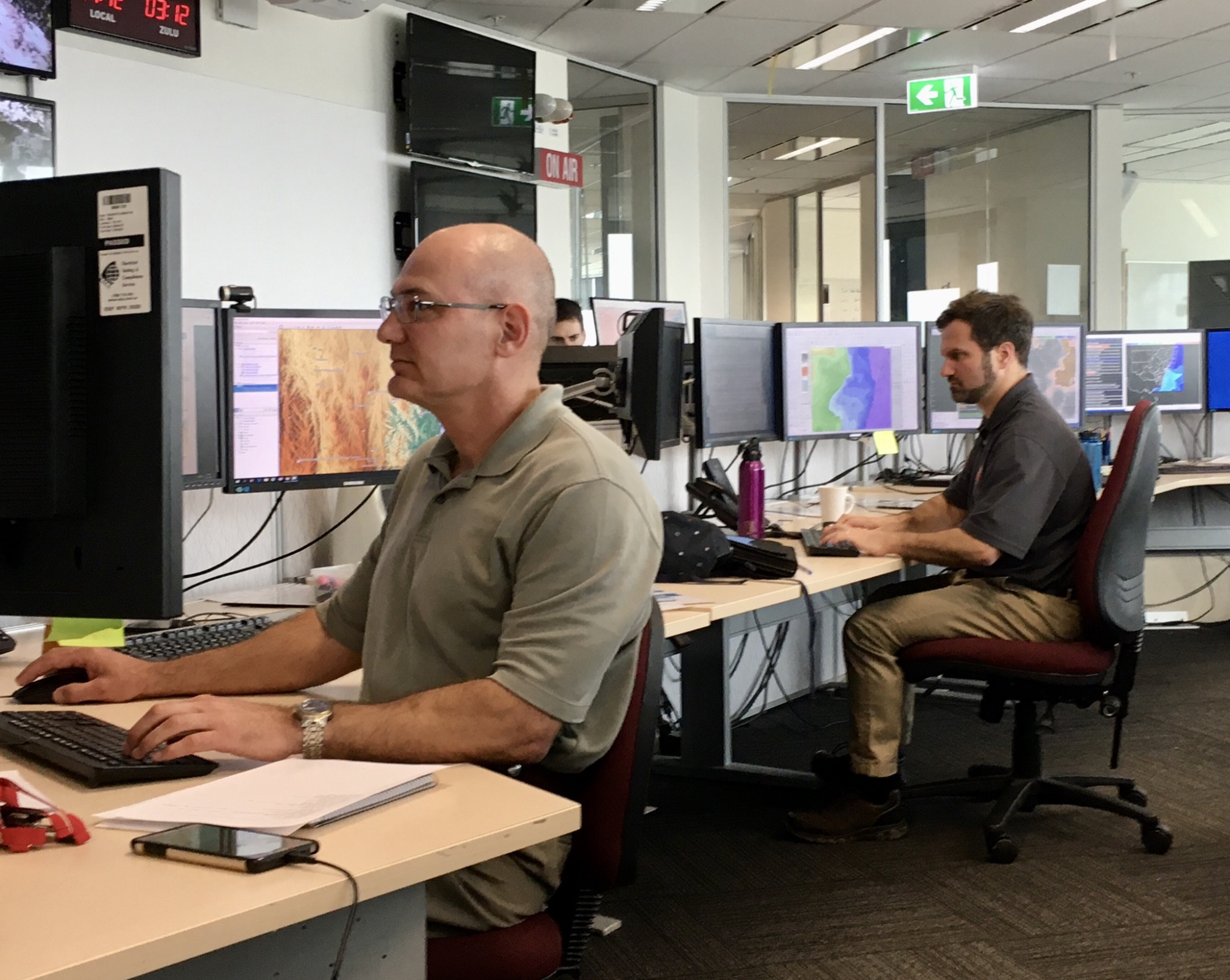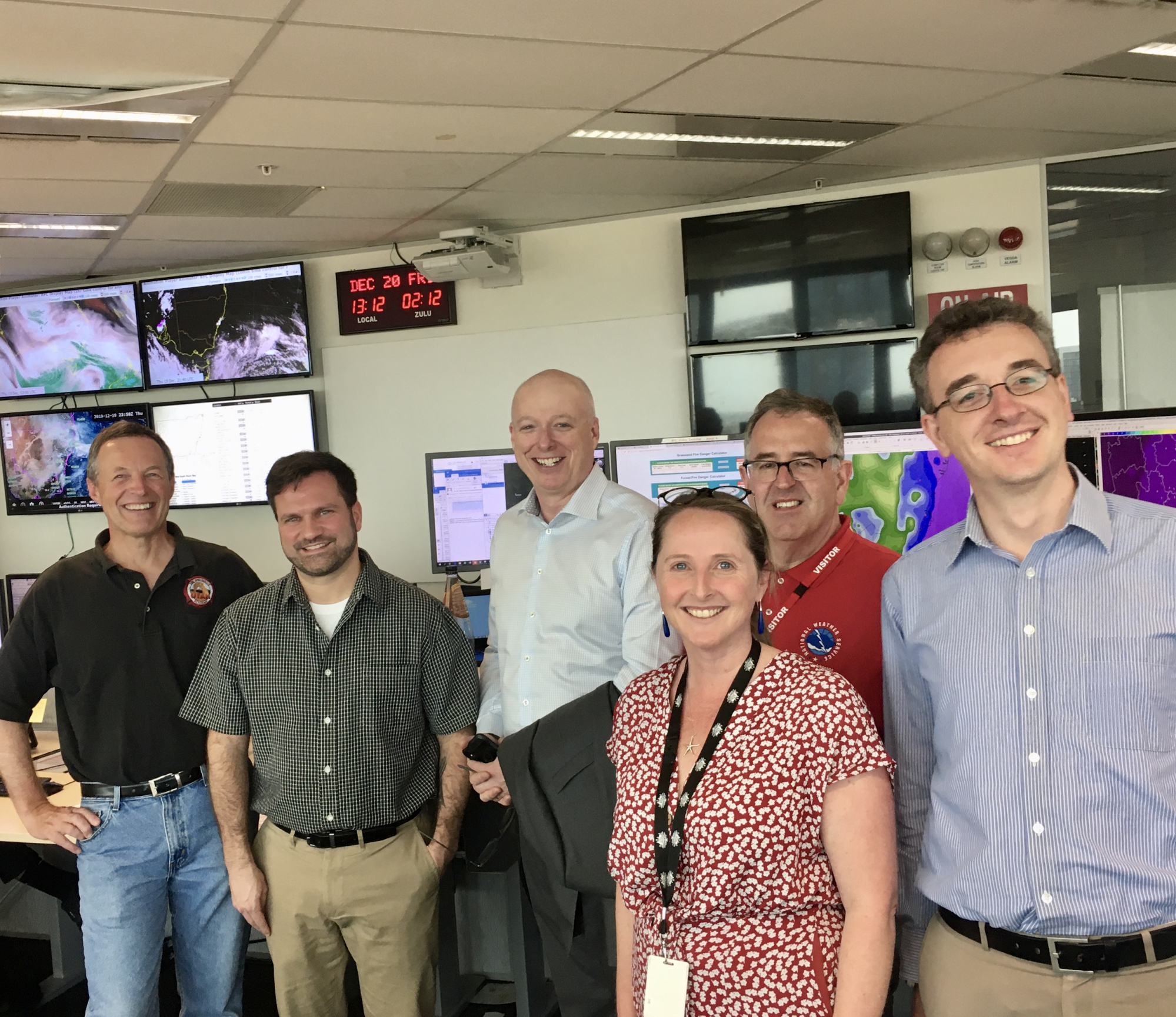Weather prediction is essential to firefighting effort
January 10, 2020 — With more than a hundred wildfires burning across Australia, the Aussie government reached out to the United States for assistance, and NOAA jumped into action. A team of NOAA National Weather Service Incident Meteorologists (IMETs) have deployed Down Under to help with the firefighting effort.
NOAA IMETs deployed to Australia in November and December and spent the holidays working at the Australian Bureau of Meteorology (BoM) in Sydney, Melbourne and Brisbane. In total, nine IMETs will deploy to Australia through March 2020 for six weeks at a time. The United States and Australia signed a partnership agreement for wildfire assistance between the two countries in 2006. In almost every year since, the countries have assisted each other to combat a number of devastating wildfires.
Millions of acres have burned since the fires began in September, destroying 2,000 homes and killing at least 26 people and approximately one billion animals. Prolonged drought in Australia combined with extreme heat has created prime conditions for wildfires to spread this year. February is the traditional peak of wildfire season in Australia, and fire activity is expected to continue for several months.
Follow the IMETs @NWS_IMETS_OPS or @NWS
SCIENCE FAST FACT: Adapting to a new forecast environment
Forecasting in Australia, compared to North America, has its challenges. When forecasting south of the equator one must remember the trade winds blow from the southeast, the opposite direction than in North America and cold air comes from the south not the north as in the U.S. And in Australia they use the metric system and the Celsius scale. Another task that takes getting used to for a forecaster is the difference in time zones between local (in Australia), UTC (the scientific universal time that meteorological data is time stamped with) and their home time zone, where they normally work.
 |
| Left to right, IMET Carl Cerniglia (NWS Tucson, AZ) and IMET Mark Petterito (NWS Binghamton, NY) develop many of the 20 spot weather forecasts requested by firefighters on this day. They work alongside meteorologists at the Australian Bureau of Meteorology regional office in Sydney. January 2020 Credit: NOAA |
 |
| Several IMETs deployed to Australia to help with fire weather forecasting. From left to right: Mark Struthwolf (NWS Salt Lake City, UT), Mark Pellerito (NWS Binghamton, NY), Dr. Andrew Johnson (CEO and Director of Meteorology at the Australian Bureau of Meteorology), Jane Golding (Bureau of Meteorology), in red shirt Joe Goudsward (NWS Little Rock, AR), and Rob Taggart (Bureau of Meteorology). Location: Australian Bureau of Meteorology, Sydney. December 2019. Credit: NOAA |